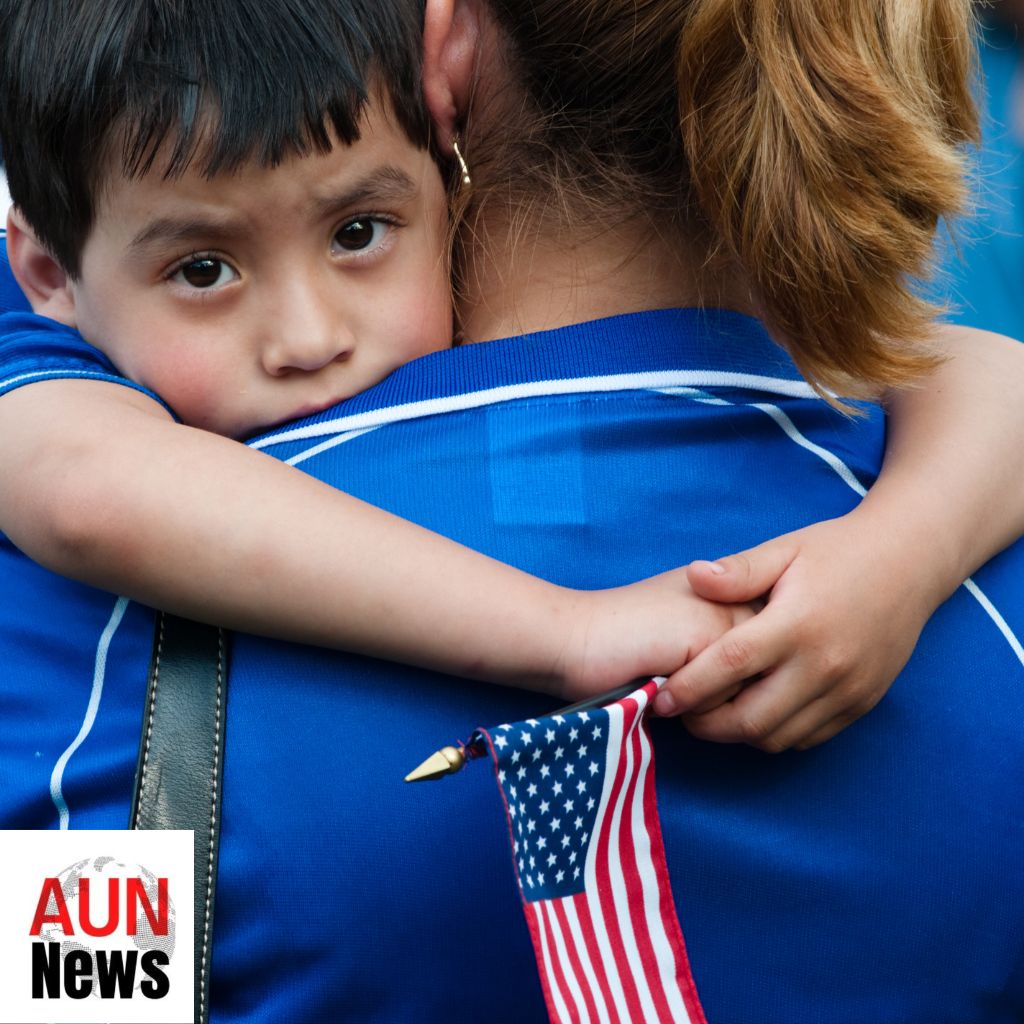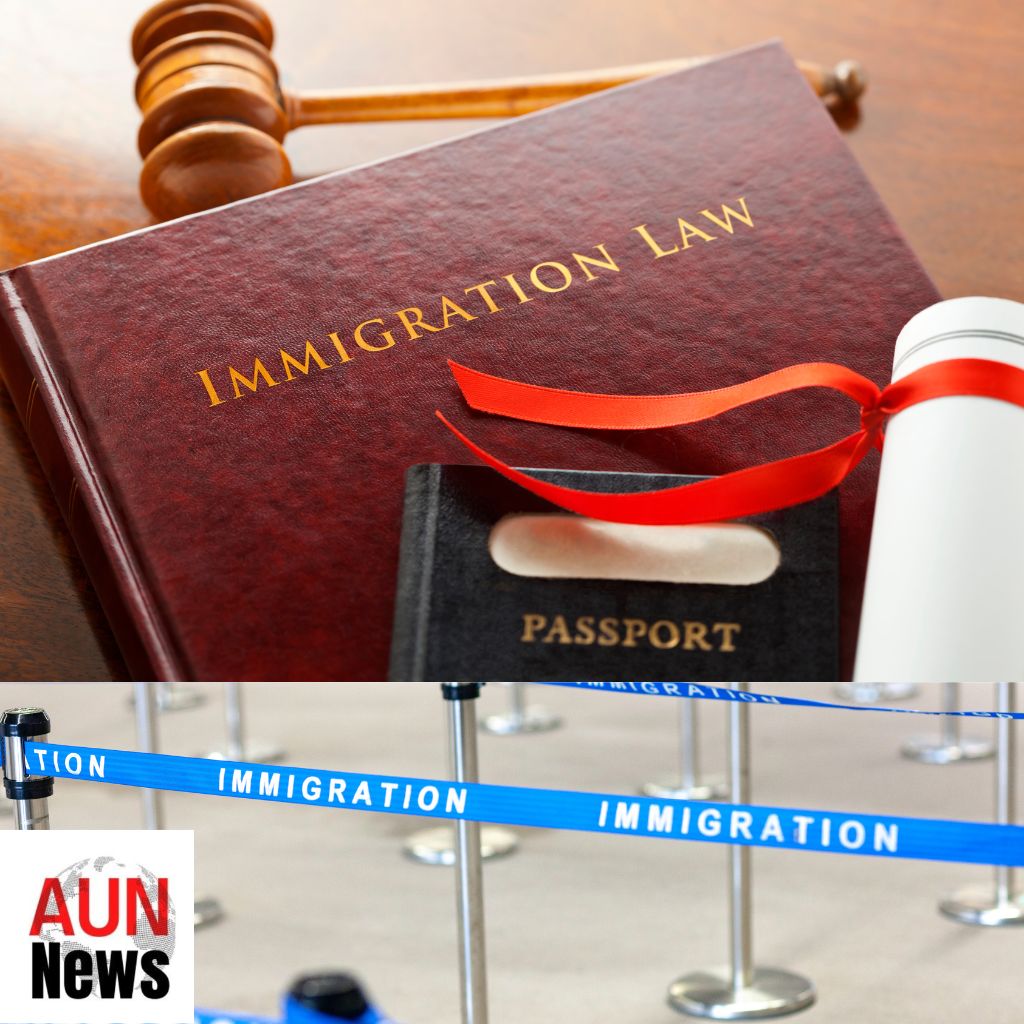
Summary:
- Thousands of Venezuelan immigrants are stuck in countries that don’t want them and can’t afford to take them home.
- Some are still trying to reach and cross the U.S. border, while others are trying to get the money they need to go home.
- Raul was with a group that crossed the jungle between Colombia and Panama. Venezuelans in the U.S. dream of going to the United States to live and work legally.
- This dream has been shattered by their country’s political and economic crisis.
- They are cut off from their dream and forced to beg for food and money on the streets.
- The United States has decided to limit the number of undocumented migrants it will accept into the country.
- This means that thousands of Venezuelans who were on their way to the U.S. will have to go back to their home country, where they sold everything for the journey.
- Venezuelan politician Guanipa says that at least 70% of the people who crossed the Darien Gap in the last year were Venezuelans.
- UN agencies and aid groups think that the flow of migrants will continue as long as the situation in Venezuela is bad.
- Peru is working to change its rules for migrants, and Chile has said it will take steps to stop unwanted immigration.
- U.N. agencies set up a platform to help migrants in the region and host communities.
CARACAS, Oct 29 – Thousands of Venezuelan immigrants who crossed the dangerous Darien jungle between Colombia and Panama or made the dangerous trip through Central America and Mexico to get to the United States are now stuck in countries that don’t want them and can’t afford to continue their journey or go back home.
Venezuelan Immigrants, No longer accepted
On Oct. 12, the U.S. government surprised everyone by saying it would no longer accept Venezuelans who crossed its southern border without papers. Instead, it would send them back to Mexico. In exchange, it would give up to 24,000 Venezuelan immigrants a chance to come to the U.S. by air and meet new rules for the next two years.
“When President Joe Biden gave the order, we were already in the United States, but we were put in a van and sent back to Mexico. It’s not fair, since we were already in the country on the 12th “A young man named Antonio told reporters in tears that he was one of the first people sent back to the border city of Tijuana.
He was one of about 150,000 Venezuelans who crossed the U.S.-Mexico border this year to join the 545,000 Venezuelans who were already in the U.S. by the end of 2021.
Tale of Venezuelan Immigrants
Raul was with a group that took a week to cross the jungle and rivers in the Darien Gap. They had to “bushwhack” through the rain and mud, and they were hungry, thirsty, and worried about animals and attackers. When he got to the indigenous village of Lajas Blancas in the eastern part of Panama, he found out about a new U.S. law that made his dangerous trip pointless.
There, he told Tomás Guanipa, a Venezuelan politician who was part of the opposition and came to the village in October, that “The trip is too hard, I saw people die, and I couldn’t save one person because he fell into a river. It wasn’t worth it. Now, all I have to do is get back to my country alive.”
There are now thousands of Venezuelan immigrants stuck in Panama, as well as in Costa Rica, Honduras, Guatemala, and, of course, Mexico. Some are still trying to reach and cross the U.S. border, while others are trying to get the money they need to go home.
Hopes shattered

They go to shelters that are already full and don’t have enough money to take care of them. Sometimes they sleep on the streets or are seen walking around and begging for food or a few dollars. They are suddenly cut off from their dream of going to the United States to live and work legally.
This goal was helped by the fact that the United States made it easier for Venezuelans to get asylum as part of its opposition to President Nicolás Maduro’s government, which the U.S. considers to be illegal.
Also, it set up a temporary protection status that let Venezuelan immigrants who made it to the U.S. stay and work.
In the last ten years, Venezuela has been in the middle of a political and economic crisis. This, along with the poverty of the people, has led to the largest exodus in the history of the hemisphere. According to UN agencies, 7.1 million people, or a quarter of the population, have left the country.
Affected by the election
The flood of Venezuelan immigrants coming across the southern border happened at the same time as the tough campaign for the midterm elections for the U.S. Congress in November. If the Republican Party, which is very opposed to Democratic President Biden, wins both chambers, they will be in charge.
Republican governors and candidates from the south were very much against the government’s immigration policy and willingness to be flexible with Venezuelan immigrants. They decided to send Venezuelan asylum seekers by bus and even by plane to Democratic-run areas in the north.
So, hundreds of Venezuelans were taken by bus or plane and left out in the open in New York, Washington, D.C., or Martha’s Vineyard, an island in the northeastern state of Massachusetts where millionaires spend the summer.
Migrants as political tools
Amnesty International and other human rights groups criticized the use of migrants as political rewards or as weapons in the election campaign.
In response to this, the Biden administration changed its policy toward Venezuelan immigrants by closing the country’s doors to them at the southern border, reactivating Title 42, a pandemic public health order that allows for the immediate expulsion of people for health reasons, and making a deal with Mexico to send migrants back to that country.
As a consolation, 24,000 annual quotas are given to migrants who have sponsors who will take care of them in the United States. This is in addition to other requirements, such as not trying to cross the border illegally or not being a refugee in another country. This is almost the same number of Venezuelans who tried to enter the U.S. each month this year.
What will happen next to the Venezuelan Immigrants?
People who were on their way will be left in limbo and have to go back to their home country, where many of them sold everything, from their clothes to their homes, to pay for the dangerous trip.
Hundreds of Venezuelans have started to fly to Caracas from Panama on flights they paid for themselves. Meanwhile, people in Mexico and other countries are waiting for the possibility of free air travel for humanitarian reasons, since thousands of migrants have been left without jobs.
There are whole families who were already living as immigrants in other countries, like Chile, Ecuador, or Peru, where there are one million Venezuelans in Lima, but decided to leave because of a hostile environment or because it was hard to keep a job or find decent housing because of inflation in the region as a whole.
Hector’s story

This is what Héctor told reporters about his family. He, his wife, his mother-in-law, and their three children spent almost $10,000 on tickets from Chile to the Colombian island of San Andrés in the Caribbean. From there, they took a boat to Nicaragua and then traveled by land until they reached Guatemala, where they were shocked by the U.S. government’s announcement.
Now that he is in touch with family in the U.S., he is thinking about going back to the country he left three years ago to go to Chile or trying to keep going while he waits for another way to get into the U.S.
The United States says that the number of undocumented migrants crossing or trying to cross its border has gone down a lot since Oct. 12.
Stopping illegal migration
At the time, Washington said it did what it did to stop human trafficking and other crimes related to illegal migration and to stop people from crossing the border in the dangerous Darien Gap.
The Panamanian government says that between January and October 15, 184,433 people without papers came to Panama from the Darien jungle. Of those, 133,597 were from Venezuela.
After he got back to the country on October 25, the politician Guanipa told AUN News that at least 70% of the people who crossed the Darien Gap in the last year were Venezuelans, as well as people from other Latin American countries, the Caribbean, and Africa.
After hearing from people who had made the dangerous crossing, he told his fellow Venezuelans, “There is no reason to risk your life” on this harsh stretch that connects South America to Central America.
Venezuela Government version
The Venezuelan government says that its political and media fight with the U.S. is to blame for the large number of people leaving the country and the dangers they face in the Darien Gap. It also says that the reported numbers of migrants are wildly exaggerated and that, on the other hand, more than 360,000 Venezuelans have returned to the country since 2018.
Heads of UN agencies and international aid groups think that the flow of migrants will continue as long as the situation in Venezuela is bad. Because of this, they are asking host countries to set up rules and other ways to help the migrants fit into their communities.
New Rules coming up in other countries

While the United States has closed its doors to Venezuelan migrants, new rules are being made in countries like Chile, Ecuador, Peru, Colombia, Mexico, and some Central American countries to change their policy of helping Venezuelans.
Ecuador, which has taken in the most Venezuelans, changed its Human Mobility Law to include more reasons for deportation, such as “posing a threat to security,” and Colombia, which has taken in the most Venezuelans, got rid of its office for the care and economic integration of migrants.
People deported from Central America or Mexico will need visas to enter Panama. Peru is working to change its rules for migrants, and the government of Chile, which in the past has kicked hundreds of migrants off of planes, said it will take steps to stop unwanted immigration.
UN reports
As of September, U.N. agencies had recorded 7.1 million Venezuelans as migrants. Most of them had left the country since 2013, and almost 6 million of them were in Latin American and Caribbean countries nearby.
Families have not only tried to get to the U.S. or Europe, but also traveled thousands of kilometers on trips they could never have imagined, sometimes by bus, but often on foot, through secret jungle passes or cold mountains, to get to Brazil, Colombia, Ecuador, Peru, Argentina, or Chile.
Others tried their luck on neighboring Caribbean islands that were dangerous, and dozens of people died when the boats they were on, which were too full to reach safe shores, sank.
Faced with this explosive situation, the United Nations Refugee Agency (UNHCR) and the International Organization for Migration (IOM) set up a platform for programs to help migrants in the region and host communities. This platform is run by Eduardo Stein, a former vice president of Guatemala.
Donor countries and institutions have promised to give them 1.7 billion dollars for their budget for 2022, but so far they have only given them 300 million dollars. This is another sign that Venezuelan migrants are no longer the most important people on the international stage.
